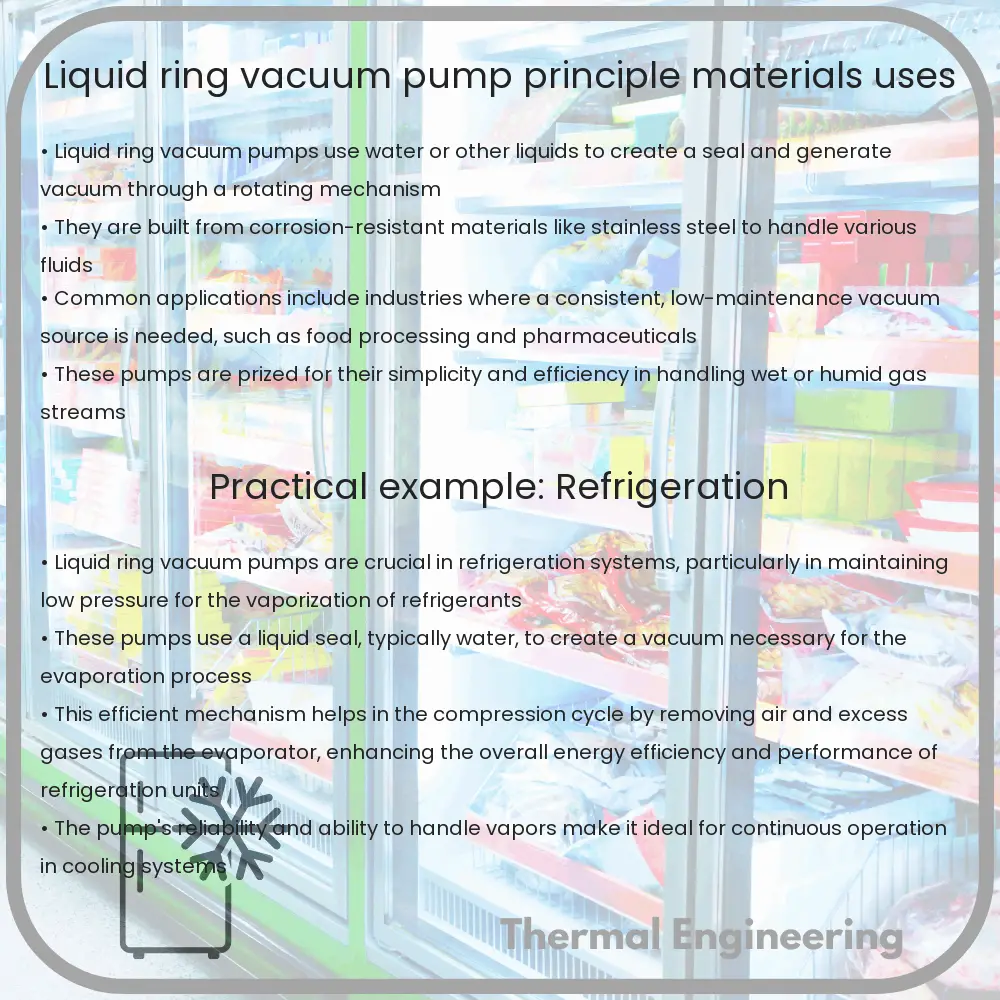Learn about liquid ring vacuum pumps, their operation, construction materials, and industrial applications.

Liquid Ring Vacuum Pump: An Overview
A liquid ring vacuum pump is a robust and essential device used in various industrial applications. It operates on a simple yet effective mechanism facilitating the maintenance of the desired vacuum. Used widely in industries such as chemical, power, food, and more, these pumps offer an efficient solution for handling gaseous substances and vapors. Below, we explore the principle of operation, the materials used in making these pumps, and their common applications.
Principle of Operation
The liquid ring vacuum pump functions on the principle of a rotating positive displacement mechanism. Essentially, it consists of an impeller located eccentrically within a cylindrical casing partially filled with sealing liquid, typically water. As the impeller rotates, the liquid is thrown outward due to centrifugal force and forms a concentric ring along the inner wall of the casing. This creates crescent-shaped cavities between the blades of the impeller which expand and contract as they rotate.
During operation, gas enters the pump through an inlet port, gets trapped in these crescent-shaped cavities, and is carried around the casing. The process compresses the gas as the impeller blades pass the discharge port, effectively increasing the pressure and disposing of the gas. This pumping cycle allows the establishment of a continuous vacuum in systems connected to the pump.
Materials Used in Construction
Liquid ring vacuum pumps must be constructed from materials that can withstand harsh working conditions, including exposure to corrosive environments. Common materials employed include:
- Stainless Steel: Used for its resistance to corrosion, strength, and durability. It is ideal for pumps handling aggressive chemicals.
- Cast Iron: Often used for its cost-efficiency and good mechanical properties. However, it is less resistant to corrosion compared to stainless steel.
- Bronze: Used in areas susceptible to corrosion, especially for impellers where higher mechanical strength is required.
- Ceramics and Plastics: Employed for specific components that contact highly corrosive fluids or for applications that require lighter weight parts.
Common Uses of Liquid Ring Vacuum Pumps
Liquid ring vacuum pumps see a variety of applications across multiple industries due to their reliability and ease of maintenance. Some typical uses include:
- Chemical Industry: Vacuum filtration, distillation, and evaporation processes.
- Pharmaceutical Industry: Used in the production of medicines where maintaining a contaminant-free environment is critical.
- Food Processing: Employed in operations such as vacuum stuffing, filling, and dehydration processes.
- Power Generation: For condenser exhausting in power plants.
- Sugar Industry: In sugar mills to enhance the efficiency of sugar production processes.
Understanding liquid ring vacuum pumps is essential for industries that require reliable vacuum generation. Their functionality, coupled with versatility in handling different materials and operating conditions, makes them an indispensable tool in many industrial operations. Equipped with this knowledge, industries can make informed decisions about incorporating these pumps into their systems for optimal performance and efficiency.